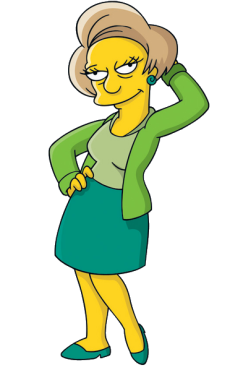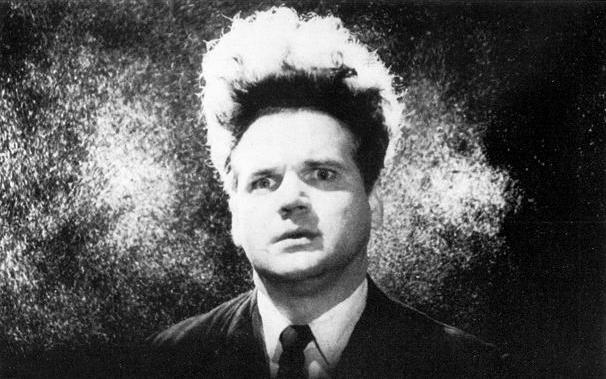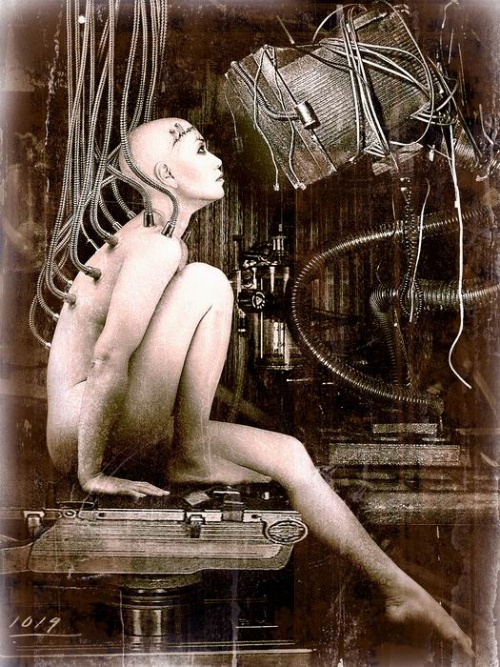I love watching animated shows and films, but there are so many out there that I’ve still only scratched the surface, and there are plenty of great and imaginative cartoons that I still have yet to see. Here are thirteen of them.
13- Superjail! So far, I’ve only had the chance to see little bits and pieces of this show, which is a shame, because it looks fantastic. It’s a bizarre and very gory cartoon, set in a gigantic prison in another dimension. It’s run by the Warden, a character heavily inspired by Gene Wilder’s interpretation of Willy Wonka, so much so that he even wears a purple top hat and tails. (And I do love top hats.) He’s sadistic, with a very loose grip on his sanity, but also rather affable, and relatively harmless, as long as you’re not one of Superjail’s inmates. He usually causes problems thanks to his weird and/or selfish whims, which ultimately leads to almost every episode devolving into some sort of chaotic, psychedlic bloodbath, where thousands of prisoners end up slaughtered. It really uses the medium very well. Also, it may have once referenced The Residents.
12- Fantastic Planet. I’ve seen about a quarter of this one, and I think it has to be one of the most beautiful animated films ever made. Visually, it’s very creative, which is important when it comes to animation. I also want to watch the whole thing because Fantastic Planet is a sci-fi film, but one that seems to look at the genre from a different perspective than most sf films do. I’m a big fan of fantasy and sci-fi, and I’m very strongly against the idea that all speculative fiction has to be about the same tired, dull old stuff. It doesn’t look like a watered-down, unimaginative, shallow copy of Star Wars, and while it does use a lot of fairly familiar concepts and tropes found in this sort of thing (super-intelligent, giant aliens make humans their pets, only for the humans to rebel) its distinctive, surreal look and dreamlike ambiance sets it apart from your standard Space Opera.
![]()
11- Cat Soup. This is meant to be a rather weird anime film. I haven’t seen any of this yet, but I know it has cats in it. The cats look kind of cute, but I’ve read that it’s pretty creepy. You just can’t trust anime.
![]()
10- Face Like A Frog. I was watching Oingo Boingo videos on Youtube when I came across a song they did for an animated short called Face Like A Frog. It was made by Sally Cruikshank, an animator famous for her very unique, wonderfully creative style, who has also done many other weird cartoons, including some stuff for Sesame Street. (!) Her work is fluid and almost childlike, and I love how she portrays the world in her cartoons. They show how you can play with stuff like perspective and movement, and that you don’t have to approach that sort of thing in the conventional way.
9- Ergo Proxy. I’m mostly just interested in this show for its visuals and mood. About two years ago, I watched a few episodes, because I’d finished Serial Experiments Lain (my favourite series ever) and was looking for something similar. While does seem to be more of an action-oriented show (one of the things I loved about Lain was that it focused on ideas and character development, and didn’t contain any action scenes), the action bits that I have seen were done very well, in a stylised sort of way, and it came across as an adult sci-fi thriller, rather than just something with a lot of unrealistic fighting for the sake of fighting. One thing that really helped this was the animation, which just blew me away. I’ve rarely seen animation this good. It’s absolutely beautiful, and worth watching for that alone.
![]()
8- Adventure Time/Invader Zim. Everybody and their pet pigeon seems to be a fan of Adventure Time, which makes me very ashamed to admit that I have not yet seen a single episode of it. (Also, I do not have a pet pigeon either.) As for Invader Zim, it’s another very popular series at the moment, created by comic book artist Jhonen Vasquez, who is most famous for drawing Johnny the Homicidal Maniac. (I haven’t had the chance to read that either, but I’m certainly interested in doing so.)
![]()
7- The Illusionist. This is a French animation that came out in 2010, about a stage illusionist who makes friends with a girl named Alice, who believes that his magic tricks are real. The artwork looks lovely and very cosy, and the story itself sounds delightfully poignant. I was given the DVD as a very thoughtful present, and I can’t wait until I actually get the time to watch it.
![]()
![]()
6- My Dog Tulip. This was another animated film that came out recently, based on the memoirs of the late gay author JR Ackerly. Authors are almost always interesting to learn about.
![]()
5- Mary and Max. This is another of those unlikely friendship stories that I love so much. It’s a Claymation/stop-motion film about a lonely little girl named Mary, who by chance becomes penpals with Max, an obese and mentally ill middle-aged man. I feel really, really bad that I haven’t watched it yet.
![]()
![]()
4- Ghost in the Shell. As I mentioned above, Serial Experiments Lain is my absolute favourite TV show. After watching that, and after reading stuff by Jeff Noon and William Gibson, I became more interested in the cyberpunk genre, mostly because of its sense of aesthetics, and some of its themes. Ghost in the Shell (which is a brilliant title) is another pretty well-known cyberpunk anime, and a cousin recommended it to me, so I’ll have to give it a go very soon.
![]()
3- Key the Metal Idol/ Texhnolyze. These two are also on the list because of Lain. The former is supposed to be a sort of spiritual predecessor to series’ (I’m not sure if that’s correct grammar o not) like SEL, and so I’m interested in seeing something that it might have drawn inspiration from, or that simply helped pave the way for Lain to exist in the first place. As for Texhnolyze, it’s meant to be Lain’s spiritual successor, having been made by the same people. Both certainly look interesting, and hopefully they’ll also contain some cyberpunk elements, or at least have a similar tone to Lain.
![]()
2- Aeon Flux. I think that this used to be on MTV, back when it did animated shows like Daria. (Which is one of the best cartoons ever.) Like with Fantastic Planet and Face Like a Frog, the artwork looks really original and idiosyncratic, not to mention beautifully stylised. I’ve heard that it also plays with a lot of tropes and devices normally associated with action stories, which is an idea I really like.
![]()
1- Jan Svankmajer’s Alice. Svankmajer (I hope I spelled that right) is a Czech animator, famous for his surrealist stop-motion films. His adaptation of the Lewis Carroll books is definitely his most well-known creation. I’ve been fortunate enough to see a few small pieces of it, and I have to say that it seems to be one of the few films that does Alice justice. Once you get used to how creepy the characters look, you might actually start to find it rather charming. It manages to be faithful to the source material, while at the same time allowing Svankmajer to create his own version of the tale.
![]()
![]()












.jpg!Blog.jpg)

































